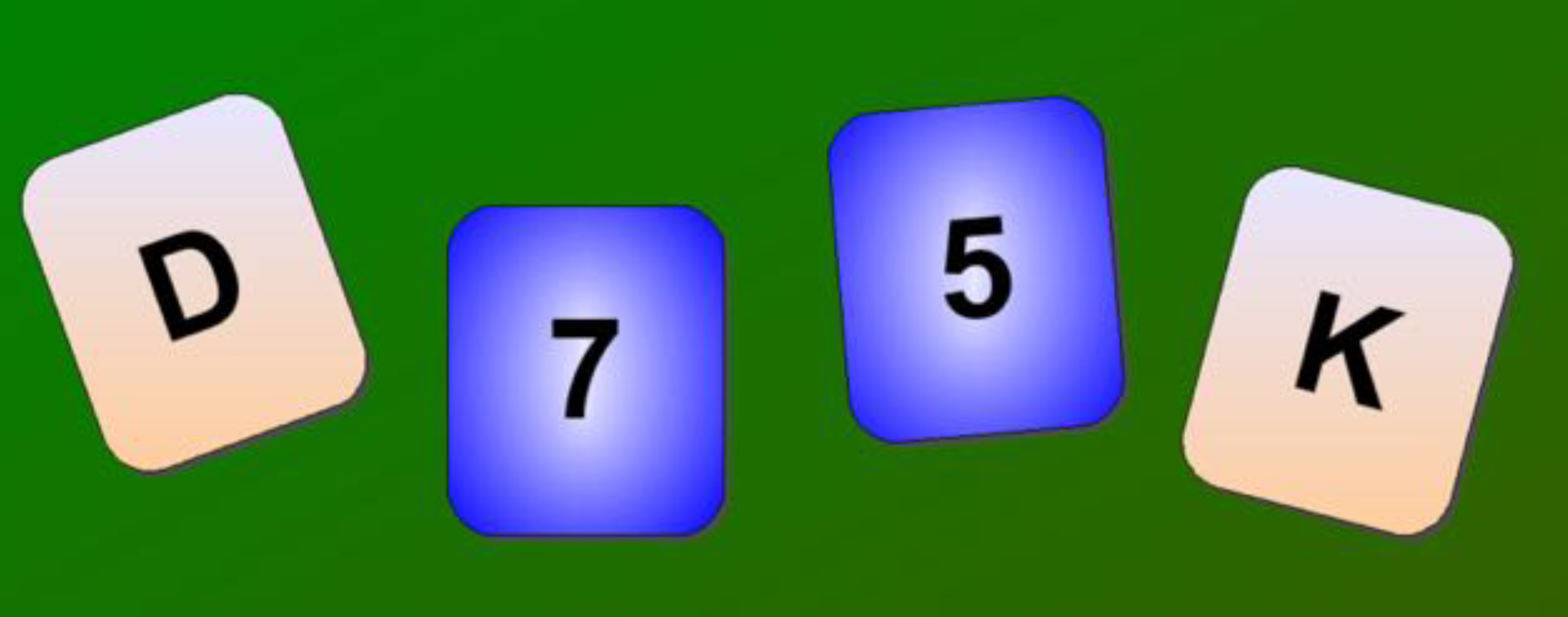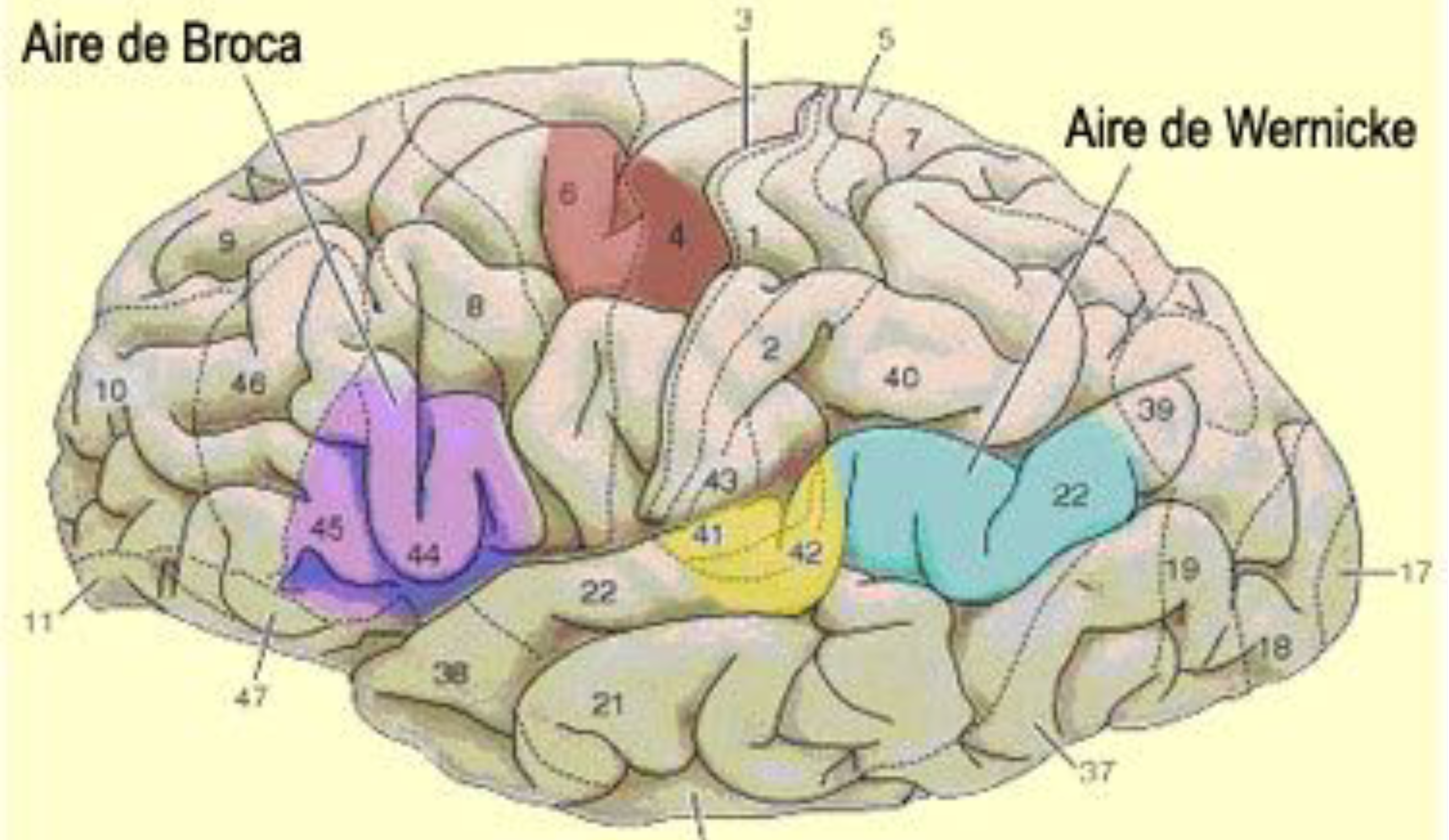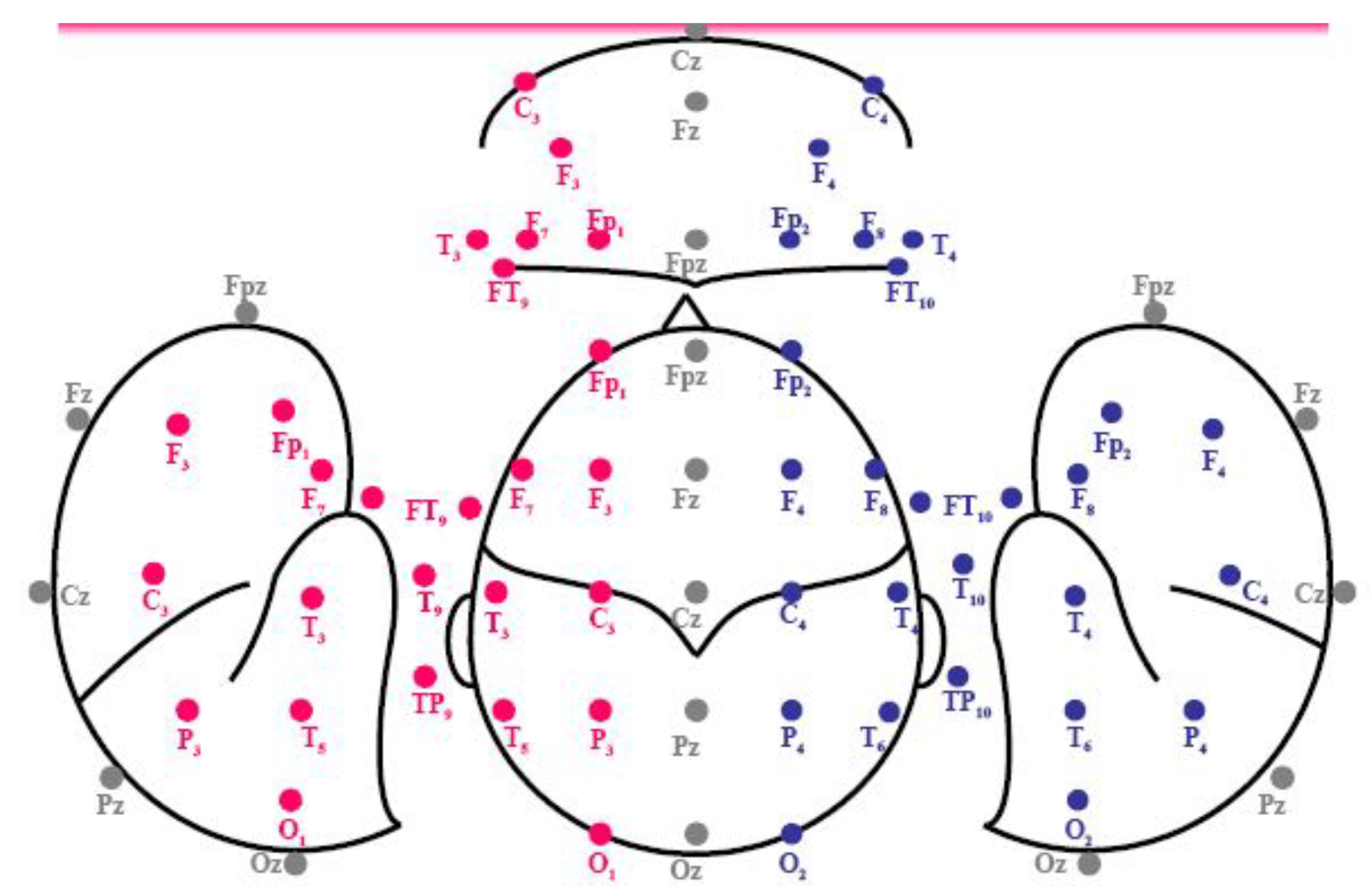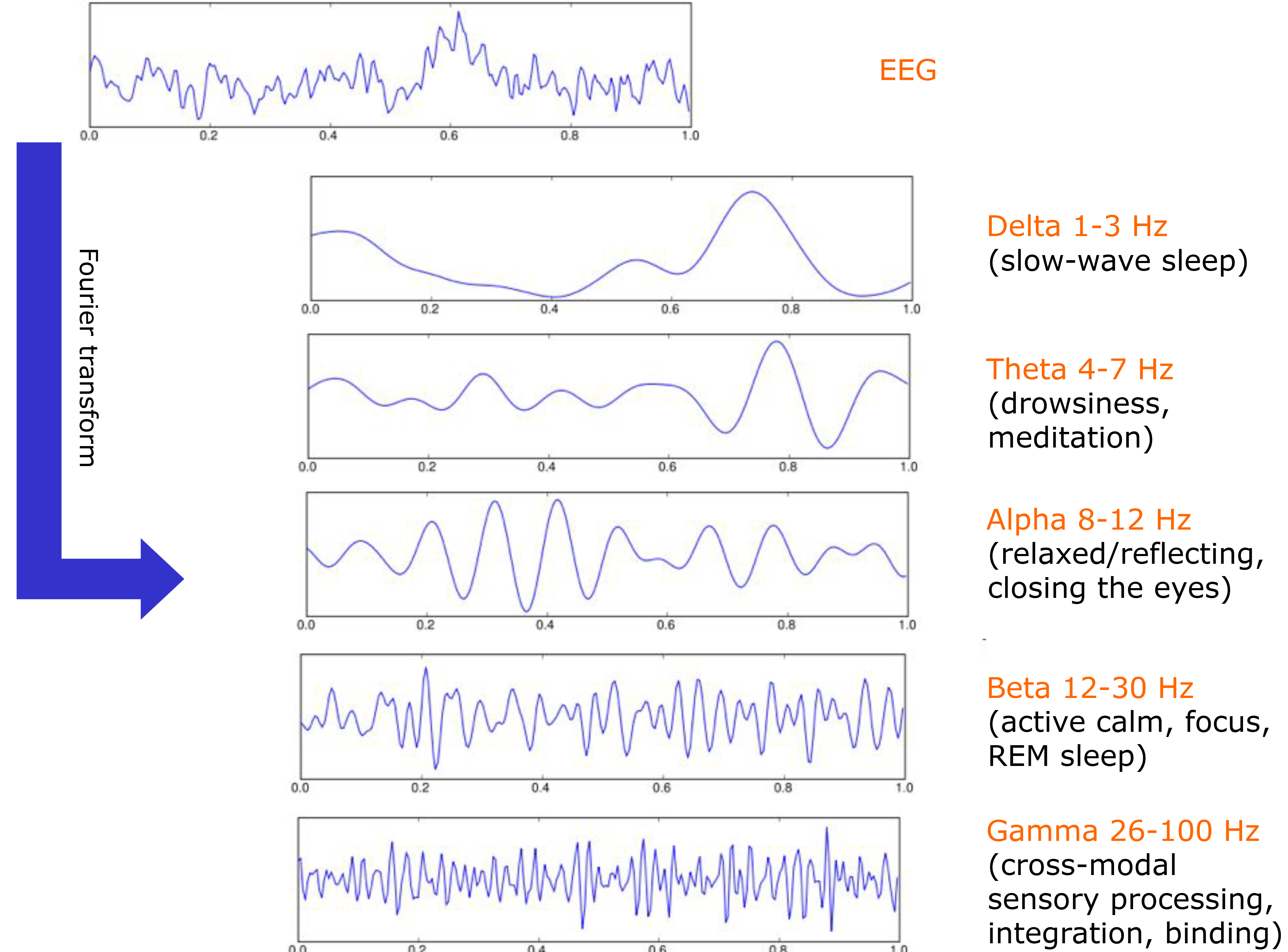Examen
Une heure, examen écrit, Vérifier dans les supports pour les parties à apprendre ou pas!!!
Cognitive Science : “If “cognition” means in Latin “faculty of knowing”, one could say that cognitive sciences aim at studying the functioning of the human capacity to extract, select, process and interpret information (conscious and unconscious) resulting from the interaction between internal mental activities and the environment in order to produce adapted responses.” “It is thus a question of observing, studying and understanding the major mental functions of human beings (perception, action, memory, language, reasoning, learning, communication…), of relating these mental functions to the study of behavior in interaction with the surrounding world, but also of observing these capacities from different complementary angles: developmental, clinical and pathological. By studying these functions, cognitive sciences are also interested in our brain, as a carrier of our knowledge, and of our mental representations.”p.12
« Cognitive science is the study of individual agency: its nature, scope, mechanisms, and patterns » Figdor (2018) • Agency: the capacity of an actor to act in a given environment.
Cognitive sciences :
| Object of Study | Aims | Context |
|---|---|---|
| Knowledge, mind, thought, intelligence, brain, agency | Study, describe, explain, understand, model | Pyschology, artificial intelligence, neuroscience, linguistics, philosophy, anthropology, mathematics |
| Dispositions, capacities, mental functions, behaviour | Simulate, imitate, go beyond? | |
| Interaction, acquisition, development, functioning, transmission, alteration | ||
| Humans, animals, plants?, artificial agents |
Historical milestones
Ancient greek philosophers (Plato, Aristotle) were already trying to describe the nature of the human mind. And not only describe, but also simulate (mechanical, articulated statues, head…)
17th century:
Pascal, about the ‘Pascaline’, first mechanical calculator : “the arithmetic machine makes effects that come closer to thinking than anything animals do; but it does not do anything which could make us say that it has willpower, like animals do.”p.20 → Distinction between computation and intention
18th entury:
Engineers were trying to develop automata (self operating machines), flute player, mechanical loom, voice production…
19th century:
Separation of psychology and philosophy. Development of experimental psychology (Wilhelm Wundt, Leipzig), no more relying on self-reflection : introduction of reaction time measures, sensation etc… William James: ""Psychology is the science of mental life, both of its phenomena and of their conditions. The phenomena are such things as we call feelings, desires, cognitions, reasonings, and the like.""p.25
Behaviourism (John B. Watson; B.F. Skinner)
Definition: Psychology as a science of observable behaviour not of conscious and unconscious mind. → Rejection of introspection and mentalist approaches. Study of the relationships between stimuli (S) and observable responses (R)
1940’s: Cybernetics
Definition: A transdisciplinary approach for exploring regulatory systems, their structures, contraints, and possibilities. “It is the study of communication and control, typically involving regulatory feedback in these systems: where action by the system generates some change in its environment and that change is reflected in that system in some manner (feedback) that triggers a system change.”p.28
First introduction of neural networks by McCulloch & Pitts, 1943.
1950’s
Break from behaviourism, reflexion on human memory and its limits. We are now trying to explain behaviours.
George Miller: “Introduced experimental techniques to study the psychology of mental processes”p.32 Chunking: grouping of items, on semantinc or perceptual grounds.
Dartmouth Summer Research Project on Artificial Intelligence : 1956 → Computer scientists, mathematicians, economist, computer scientist & psychologist
- Allen Newel: Logic Theory Machine
- Noam Chomsky: Three models of language
- George Miller: The magical number seven
Cognitivism: “mental function described as information processing”p.36 “Cognition consists of discrete,* internal mental states* (representations or symbols) whose manipulation can be described in terms of rules or algorithms (computational procedures)“p.36
A response to behaviourism : from S→R we now have R=f(S,Mental States)
(((( o Cognitivism: cognition described in terms of mental representations and computational procedures. Mind seen as an information processing machine. o Connectionism: mental phenomena described as the emergent processes of interconnected networks of units ))))
1980’s:
Connectionism: “mental phenomena described as the emergent processes of interconnected networks of simple units”p.36
⇒ Beginning of the neuronal analogy. Neural networks : micro-units connected to each other and which can be more or less active, with notion of reciprocal influences and learning. Influenced by N. Chmosky’s work on formal linguistics.
Connectionism
Avoir une fiche plus complete sur le connectionism, pareil sur l’embodied cognition et le behaviourisme : définir etc..
Francisco Varela: Developed the notion of embodied cognition: the human mind is shaped by the humab body, by its motor and sensory systems. Also developed the notion of enactivism, stating that “cognition arises through a dynamic interaction between an acting organism and its environment”p.38 Study that goes in that way too : “Experiencing Physical Warmth Promotes Interpersonal Warmth Lawrence E. Williams & John A. Bargh (2008)“p.39
In france
2 main orientations of cognitive sciences:
- Information theory, cognitivism: related to AI, computer science, engineering (Gérard Sabah, Jean-Pierre Ganascia)
- Cognitive Neuroscience: related to biology, life sciences (Jean-pierre Changeux, André Holley, Marc Jeannerod, Alain Berthoz)
Laboratories in Grenoble (LPNC, GIN, GIPSA-Lab, CerCog…), already in the 1980’s
Methods in Cognitive Sciences
Aim of cognitive psychology: “to study human cognition in controlled conditions”p.50 Based on the hypothesis that mental representations, structures, processes can be inferred from the study of behaviour.

“Which card(s) must you turn over in order to test the truth of the proposition that: if a card shows a D on one face, then its opposite face is 5?“p.51 Confirmation bias: participants show a preference for confirmation over falsification of the rule.
But less erros in the right social context → ‘Hot’ or ‘situated’ cognition: We behave differenlty depending on the context.
Measurements:
- Reaction time, time required for an operation
- Accuracy of response
- Oculometry
- Physiological response
- Phenomenology Simulation:
- Computational models
Artificial inteligence
Aim:
- Use of the computer as a tool for investigating mental faculties
- Development of the ‘intelligenve’ of the computer
Definition (M.L. Minsky): “the building of computer programs which perform tasks which are, for the moment, performed in a more satisfactory way by humans because they require high level mental processes such as: perception learning, memory organization and critical reasoning”p.56
Deeply connected to connectionism. Representation can be:
- Localist: 1 concept = 1 neuron ⇒ Sequential activation
- Distributed: 1 concept = several neurons ⇒ PDP, Parallel Distributed Processing
Linguistics
Methods in:
| Psycholinguistics | Ressembles methods in psychology (behavioural experiments,…) |
|---|---|
| Neurolinguistics | Ressembles methods in neurosciences (Neuroimaging, lesion studies…) |
| Formal linguistics | Grammatical principles… |
| Ethnolinguistics, sociolinguistics | |
| Linguistics and Speech and Language Sciences | Characterisation of the properties of natural languages |
| 4000 to 7000 languages in the world, 75 in France (based on “1999 Cerquiglini report”[[content/Introduction cognitive sc/Supports/IntroCogSci_part1_M2ScCo_2024_25_Loevenbruck.pdf#page=64&selection=44,7,48,6 | p.64]]) |
| https://francaisdenosregions.com/ |
How do we generate sounds with our body? For speech : Physiologie de la production de la parole
Measures in language: EGG (Electro-glotto-graphy), Vocal Fold endoscopy, Oral and nasal airflow, Acoustic measures, Anatomical MRI, Articulatory measures, Optoelectric tracking, Electromyography, … Behavioural measures: Perceptual tests, Interaction with speaking faces, emotions, eyetracking Developmental, biomechanical, aerodynamical, physiological, archeological measures…
Neuroscience
Aim: Understading propertis of neurons, Where and When? Spatial localisation of cerebral activations and temporal course, dynamics of activations.
Franz Gall: First thought that cerebral functions where associated with particular regions of the brain.
 Paul Broca: Patient had a lesion in the left inferior frontal lobe which resulted in a severe deficit in speech production.
Carl Wernicke: Lesion in the left superior temporal cortex resulted in a severe deficit in speech comprehension.
Paul Broca: Patient had a lesion in the left inferior frontal lobe which resulted in a severe deficit in speech production.
Carl Wernicke: Lesion in the left superior temporal cortex resulted in a severe deficit in speech comprehension.
It is known toda that those regions are key-regions implicated in speech production/comprehension, but they are not the only implicated regions (and not always).
Measuring methods:
- TMS, Transcranial Magnetic Stimulation: stimulation or inhibition (by saturation) (virtual lesions)
- tDCS, Transcranial Direct-Current Stimulation: stimulation or inhibition, less precise than TMS because the current is hard to ‘guide through the skull’.
- tFUS, Transcranial Focused Ultrasound: stimulation or inhibition, superior spatial resolution and depth of stimulation than TMS “Sanguinetti et al. (2020)“p.10 https://www.frontiersin.org/journals/humanneuroscience/articles/10.3389/fnhum.2020.00052/full (But how does it stimulate/inhibit neurons exactly???)
- Task related activation (TASK image VS CONTROL Image):
- PET Scan, Positron Emission Tomography, good spatial resolution (6mm), but low temporal resolution (>1min), intrusive method
- fMRI, functional Magnetic Resonance Imagin, very good spatial resolution (>3mm), ok temporal resolution (1-6s). Based on oxygen consumption inside the brain (not directly activation).
- NIRS, Near Infrared Spectroscopy; less spatial resolution but much easier to use than fMRI/PET scan.
- EEG, ElectroEncephaloGraphy, difficult to find the actual source of the electrical signals
- MEG, MagnetoEncephaloGraphy, source finding more robust than EEG
- BCI, Brain Computer Interface (ex Locked in syndrome : “http://www.bu.edu/bostonia/spring09/silence/“[[IntroCogSci_part2_M2ScCo_2024_25_Loevenbruck.pdf#page=24&selection=31,0,35,18|p.24]])
- Neurofeedback
- Invasive methods
- Invasive recording, stimulation and BCI
- iEEG, intracranial EEG
- ECoG, electrocorticography, to record activity and stimulate the brain

EEG

Evoked potential: “electrical signal generated by the nervous system as a response to an external stimulation (sound, light) or to the internal cognitive state (decision making, motor preparation)“p.18
EEG are low amplitude signal so recordings must be repeated and the signal averaged to improve SNR ratio.
Cognitive anthropology
Aim: Study cognition across cultures, physical & social environments
“Cognitive processes, such as thought and experience, may be influenced by the categories and patterns of the language a person speaks”p.27
Example of the snow lexicon in Inuktitut : 8+ words for ‘snow’
Linguistic relativity
Does language influence our thoughts or not?
Contra linguistic relativity: “Berlin & Kay (1969): existence of universal constraints in colour terminology”p.29 Pro linguistic relativity:
- Representation of space (left/right vs west/east)
- Representation of time (where is the future? Ahead of us? Or behind us (since you can’t see it), In mandarin : Past is UP, future is DOWN)
Ethology
Aim: Study animal behaviour, in the wild and in labs.
Cognitive ethology: “observing animals in more or less natural conditions, in the aim of understanding evolution, adaptation, function, causality and development of species-specific repertoires of behaviours. (Tinbergen, 1963)“p.30
Methods include studying Vocalisations, social behaviours (food sharing, grooming, etc.), tool use, pointing, imitation. (“http://biology.plosjournals.org/perlserv?request=get-document&doi=10.1371/journal.pbio.0040302”, p.32 )
Cognitive philosophy
Dedicated lecture will come
Aim: reflections on notions, theories and methodologies
- Questions on computation, representation •
- Mind-body relationship, dualism
- Meaning
- Free will
- Modularity of the mind
- Consciousness, qualia, subjective perception
- Description and prescription of human thinking
- Methodological issues: question the nature the explanations provided by cognitive sciences
Common notions
Mental representation
Analogue to data structure in computer science A hypothetical internal cognitive symbol/entity that corresponds to an external reality, or else a mental process that makes use of such a symbol/entity Can include: images, concepts, logical propositions, rules, analogies
Computational Procedures
Analogue to algorithms in computer science Can include: deduction, search, pairing, rotation
Mental images
“Pictorial representations capture visual and spatial information in a much more usable form than lengthy verbal descriptions.”p.42
Visual imagery is not universal!
Aphantasia : “reduced or absent voluntary imagery” inability to visualize “in the mind’s eye”p.44 But can also be in ANY modality (auditory, tactile, olfactory, gustatory, kinesthetic) Hyperphantasia: “Imagery that is ‘as vivid as real seeing’”
SKIPPED
TURING MACHINE (1936)“p.62 ⇒ Skipped”
Argument against cognitivism. Expérience de la chambre chinoise → Computation is not enough by itself for consciousness or intentionality.
SKIPPED
“NEURAL NETWORKS”p.81 ⇒ Skipped
Quali: “Individual instances of subjective, conscious experience. The ‘what it is like’ character of mental states. The way it feels to have mental states such as pain, seeing red, smelling a rose, etc.”p.83 Qualia have 4 properties: - Ineffable: that is, they cannot be communicated, or apprehended by any other means than direct experience. - Intrinsic: that is, they are non-relational properties, which do not change depending on the experience’s relation to other things. - Private: that is, all interpersonal comparisons of qualia are systematically impossible. - Directly or immediately apprehensible in consciousness: that is, to experience a quale is to know one experiences a quale, and to know all there is to know about that quale.”
Mirror neurons: neurons that fire both when an individual (animal or human) acts and when the individual observes the same action performed by another
SKIPPED
TOUT LE RESTE APRES SLIDE 86
“La perception, le langage, l’intelligence, l’émotion, l’action, la mémoire, la conscience sont les grandes fonctions cérébrales de l’homme biologique, culturel et social. Comprendre ces fonctions est un défi majeur de la société moderne. Les progrès théoriques et techniques de ces vingt dernières années, et tout récemment ceux de l’imagerie cérébrale, ont atteint une maturité suffisante pour relever ce défi dans le cadre unifié que constituent les sciences cognitives. RISC (Relais d’Information sur les Sciences de la Cognition”p.113
Website references The Cogprints archive http://cogprints.org/ Le cerveau à tous les niveaux http://www.lecerveau.mcgill.ca/flash/index_d.html Stanford encyclopedia http://plato.stanford.edu/entries/cognitive-science/ Canal U et ENS Lettres et Sciences Humaines : canal philo http://www.canal-u.tv/producteurs/ens_lsh_canal_philo WebTV scientifique hebdo http://www.universcience.tv/ International Cognition and Culture Institute http://www.cognitionandculture.net/ Mind and Life Institute https://www.mindandlife.org The Secret Life of the Brain http://www.pbs.org/wnet/brain/ IRM http://www.e-mri.org/fr/index.html Relais d’Information sur les Sciences de la Cognition - RISC (CNRS UAR3332 https://ressources.risc.cnrs.fr https://risc.cnrs.fr https://expesciences.risc.cnrs.fr/ Forum annuel de Sciences Cognitives (formations, labos, assoc. et entreprises) http://www.forumsciencescognitives.com/ LabeX CerCoG https://cercog.univ-grenoble-alpes.fr/ Atout Cerveau sur Echosciences Grenoble http://www.echosciences-grenoble.fr/sites/atoutcerveau
DEVOIR
Vous rédigerez chacun·e un compte-rendu d’un des 3 séminaires, destiné à un public non spécialiste, qui décrira : - la problématique, la ou les question(s) scientifique(s) posée(s), les éventuels débats théoriques en jeu. - les résultats majeurs obtenus, i.e. ce que les chercheurs ont trouvé d’intéressant par rapport à la (aux) question(s) théorique(s) initiale(s) ; - les implications de ces résultats, i.e. ce que signifient les résultats pour les théories ou les modèles en jeu et leurs éventuelles retombées appliquées. Vous rédigerez ce texte comme un communiqué de médiation scientifique. Le compte-rendu n’excèdera pas 1 à 3 pages. Vous pourrez rédiger en français ou en anglais. Le compte-rendu ne sera pas noté, mais vous permettra de valider, ou non, le Module « Séminaires de recherche ». Vous veillerez donc à envoyer votre compte-rendu bien à temps… Date limite d’envoi à Helene.Loevenbruck@univ-grenoble-alpes : Vendredi 20 décembre 2024, 12h (midi). Merci de nommer votre fichier selon le format suivant : Nom_Prenom_seminaires2024_25.pdf